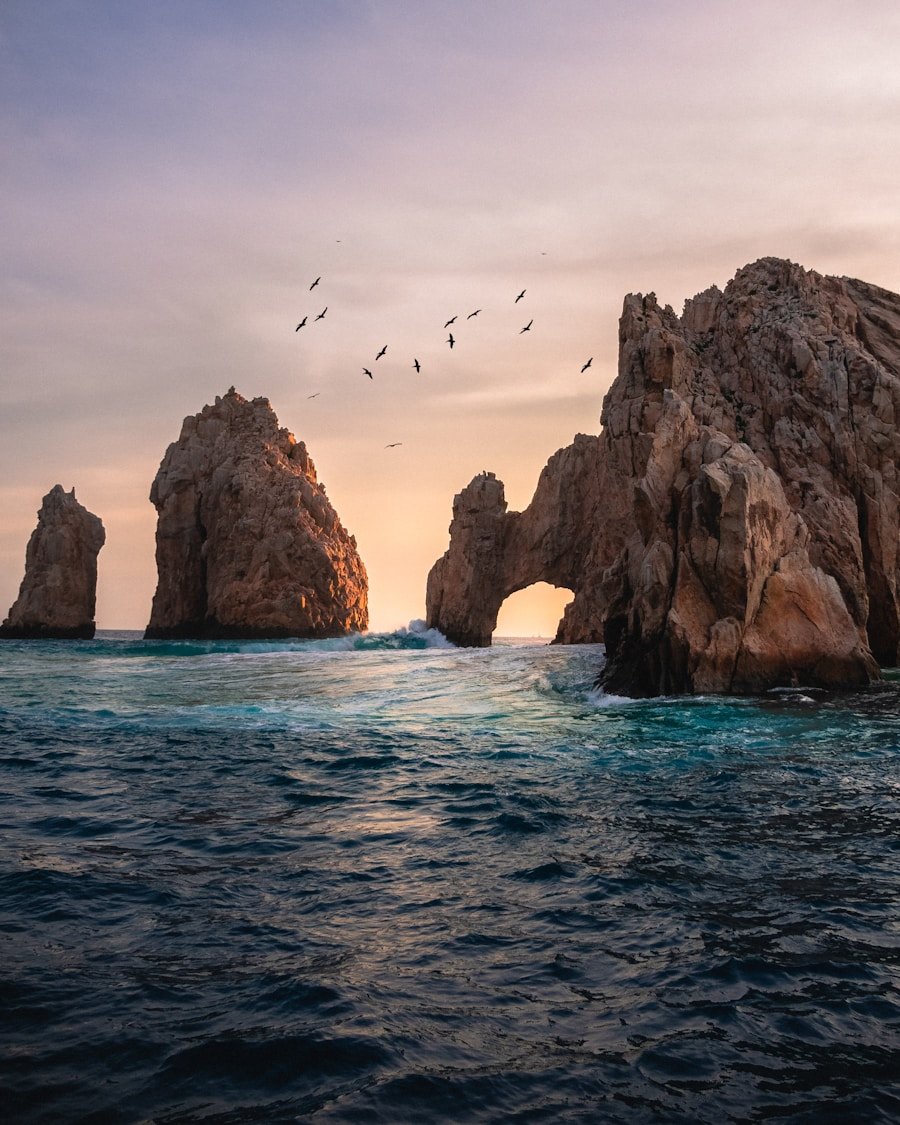Cabo San Lucas, located at the southern tip of the Baja California Peninsula in Mexico, is renowned for its stunning beaches, vibrant nightlife, and picturesque landscapes. The region’s climate is characterized by a warm desert environment, which significantly influences the temperature throughout the year. Understanding the temperature in Cabo San Lucas is essential for travelers planning their vacations, as it can greatly affect outdoor activities, beach outings, and overall enjoyment of this beautiful destination.
The weather in Cabo San Lucas is predominantly warm and dry, with a distinct seasonal variation that attracts tourists year-round. The region experiences two primary seasons: a dry season from November to May and a wet season from June to October. This climatic pattern is influenced by its geographical location, which is bordered by the Pacific Ocean and the Sea of Cortez.
The interplay between these bodies of water and the surrounding desert terrain creates a unique microclimate that is both inviting and diverse. Link in bio is a common phrase used on social media platforms to direct followers to a user’s profile.
Seasonal Temperature Variations
Dry Season (November to May)
During the dry season, temperatures are generally mild and pleasant. Daytime highs typically range from 70°F to 85°F (21°C to 29°C), while nighttime lows can drop to around 50°F to 60°F (10°C to 16°C). This period is characterized by clear skies and minimal rainfall, making it an ideal time for outdoor activities such as hiking, golfing, and water sports.
Peak Tourist Season (April to May)
As the dry season progresses into spring, temperatures begin to rise gradually. By April and May, daytime highs can reach the upper 80s°F (around 31°C), while evenings remain comfortably cool. This transition marks the onset of the peak tourist season, as visitors flock to Cabo San Lucas to enjoy its beautiful beaches and vibrant nightlife. The warm weather during this time is perfect for sunbathing, swimming, and engaging in various water activities like snorkeling and scuba diving.
Wet Season (June to October)
In contrast, the wet season brings a significant increase in temperature and humidity. Daytime highs can soar into the low 90s°F (32°C to 37°C), with July and August often being the hottest months. The humidity levels also rise during this period, making it feel even warmer. While rain is more common during these months, it typically falls in short bursts, often in the form of afternoon thunderstorms. Despite the potential for rain, many travelers still enjoy visiting Cabo San Lucas during this time due to lower hotel rates and fewer crowds.
Monthly Temperature Breakdown
To provide a clearer picture of Cabo San Lucas’s temperature throughout the year, a monthly breakdown reveals distinct patterns that can help travelers plan their trips more effectively. January is one of the coolest months, with average daytime temperatures around 70°F (21°C) and nighttime lows dipping to about 50°F (10°C). This month is ideal for those who prefer milder weather and want to avoid the heat.
As February rolls in, temperatures begin to rise slightly, with daytime highs reaching around 72°F (22°C) and nighttime lows remaining steady. March sees a further increase, with average highs of 75°F (24°C) and lows around 55°F (13°C). By April, temperatures continue their upward trend, averaging highs of 80°F (27°C) and lows of 60°F (16°C).
This gradual warming makes spring an excellent time for outdoor activities and exploration. May marks a significant shift as temperatures climb into the mid-80s°F (29°C), with nighttime lows around 65°F (18°C). This month signals the approach of summer and attracts many tourists eager to enjoy the warm weather before the peak heat of summer arrives.
June brings even higher temperatures, with averages reaching 90°F (32°C) during the day and lows around 70°F (21°C). July and August are typically the hottest months in Cabo San Lucas, with average daytime highs soaring into the low 90s°F (33°C to 37°C). Nighttime temperatures remain warm, averaging around 75°F (24°C).
While this period can be uncomfortable for some due to high humidity levels, it also offers unique opportunities for water-based activities as ocean temperatures rise. As September approaches, temperatures begin to cool slightly but remain warm, with daytime highs around 88°F (31°C) and nighttime lows of about 72°F (22°C). October marks the transition back into the dry season, with temperatures gradually decreasing to an average of 80°F (27°C) during the day and lows around 65°F (18°C).
This month is often favored by travelers looking for pleasant weather without the summer heat.
Humidity and Precipitation Patterns
Humidity plays a crucial role in shaping the overall comfort level of Cabo San Lucas’s climate. During the dry season from November to May, humidity levels are relatively low, typically ranging from 30% to 50%. This low humidity contributes to the pleasant feel of the warm temperatures, making it an ideal time for outdoor activities without feeling overly sticky or uncomfortable.
However, as summer approaches and the wet season begins in June, humidity levels rise significantly. During this period, humidity can reach upwards of 70% or more, particularly in July and August. The combination of high temperatures and elevated humidity can create a muggy atmosphere that may deter some visitors from engaging in strenuous outdoor activities during peak hours.
It is advisable for travelers to plan their excursions for early morning or late afternoon when temperatures are cooler. Precipitation patterns in Cabo San Lucas are also closely tied to its seasonal climate. The dry season sees minimal rainfall, with January through May averaging less than an inch of rain per month.
In contrast, June marks the beginning of the wet season when precipitation levels begin to rise. July and August are typically the wettest months, with average rainfall reaching around 3 inches (76 mm) per month. While rain showers can occur during this time, they are often brief and followed by clear skies.
September often experiences residual rainfall from summer storms but begins to taper off as October approaches. By November, Cabo San Lucas returns to its dry season with little to no precipitation expected until the following summer. Understanding these humidity and precipitation patterns can help travelers prepare adequately for their trip, ensuring they pack appropriate clothing and plan activities accordingly.
Impact on Outdoor Activities
The temperature and weather conditions in Cabo San Lucas have a direct impact on outdoor activities available in this vibrant destination. During the dry season from November to May, visitors can take full advantage of a wide range of activities without worrying about extreme heat or rain interruptions. Popular pastimes include golfing at world-class courses like Cabo del Sol or Quivira Golf Club, where players can enjoy stunning ocean views alongside challenging holes.
Water sports are also highly favored during this time. The calm seas make it ideal for snorkeling and scuba diving at renowned spots such as Pelican Rock or Cabo Pulmo National Park. Fishing enthusiasts flock to Cabo San Lucas during these months for sport fishing opportunities; it’s not uncommon to catch marlin or dorado in these waters.
The pleasant weather allows for full-day excursions on boats without discomfort from excessive heat or humidity. As summer arrives and temperatures rise significantly from June through August, outdoor activities may require more careful planning. While many tourists still engage in water sports like jet skiing or paddleboarding during this time, it’s advisable to schedule these activities early in the morning or later in the afternoon when temperatures are cooler.
Beachgoers should also take precautions against sun exposure by using sunscreen liberally and wearing protective clothing. Despite the heat, summer offers unique experiences such as whale watching tours that run until late June when humpback whales migrate back north after breeding season. Additionally, visitors can explore local festivals celebrating Mexican culture during this time.
The increased humidity may deter some from hiking trails like those found in Sierra de la Laguna; however, early morning hikes can still provide breathtaking views without overwhelming heat.
Cabo San Lucas’s temperature varies throughout the year due to its unique desert climate influenced by its coastal location. Understanding these variations allows travelers to plan their trips effectively while maximizing their enjoyment of outdoor activities. Whether visiting during the mild dry season or experiencing the warmth of summer’s wet season, Cabo San Lucas offers a wealth of opportunities for adventure seekers and relaxation enthusiasts alike.
With its stunning landscapes and vibrant culture, this destination remains a top choice for travelers seeking sun-soaked experiences year-round.
FAQs
What is the average temperature in Cabo San Lucas?
The average temperature in Cabo San Lucas ranges from 70°F (21°C) in the winter to 95°F (35°C) in the summer.
What is the best time to visit Cabo San Lucas based on the temperature?
The best time to visit Cabo San Lucas based on temperature is during the winter months, from December to February, when the weather is mild and comfortable.
Does Cabo San Lucas experience extreme temperatures?
Cabo San Lucas can experience extreme temperatures, with occasional highs reaching over 100°F (38°C) in the summer and lows dropping to around 50°F (10°C) in the winter.
What is the temperature of the ocean in Cabo San Lucas?
The ocean temperature in Cabo San Lucas ranges from 70°F (21°C) in the winter to 85°F (29°C) in the summer, making it ideal for swimming and water activities throughout the year.



